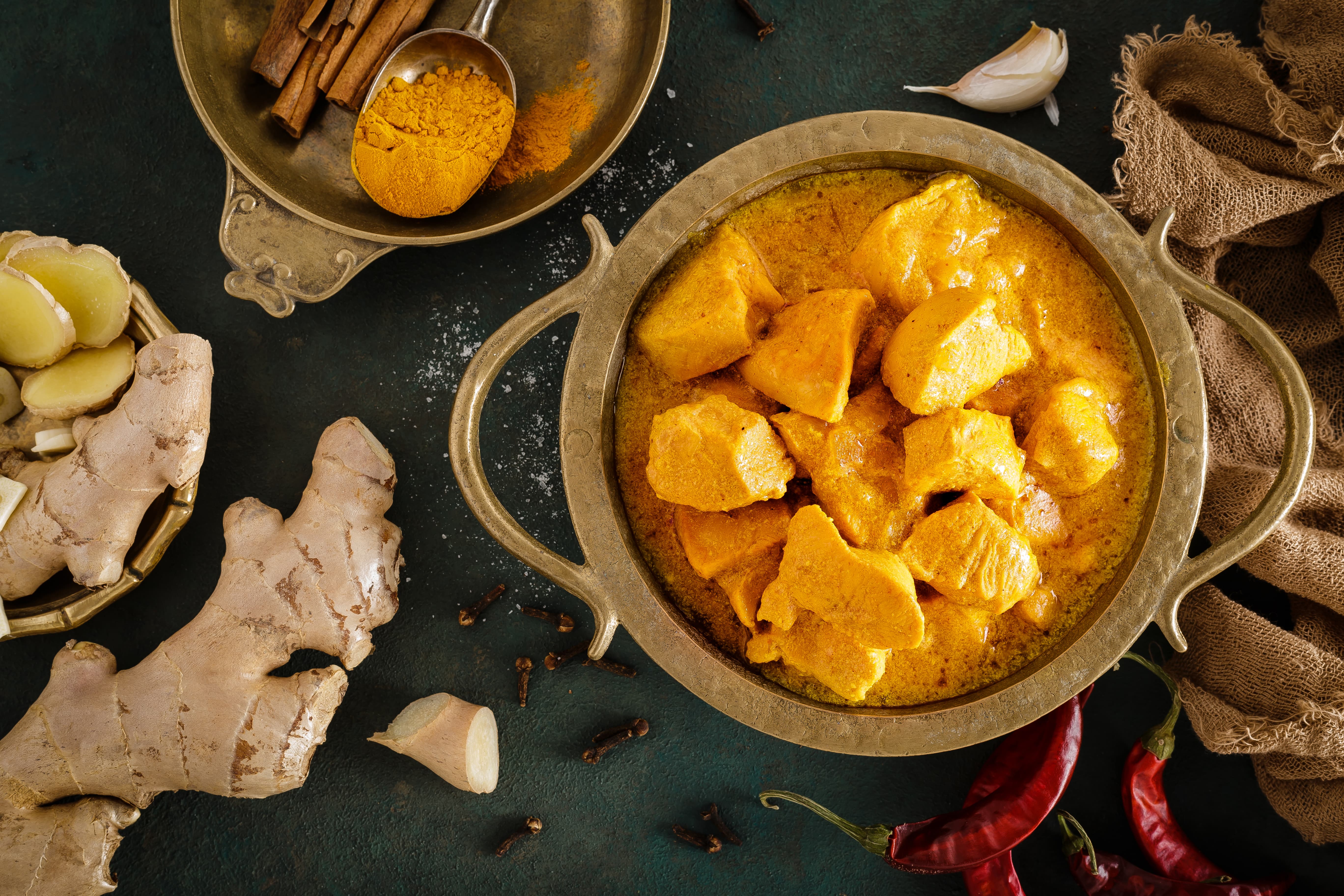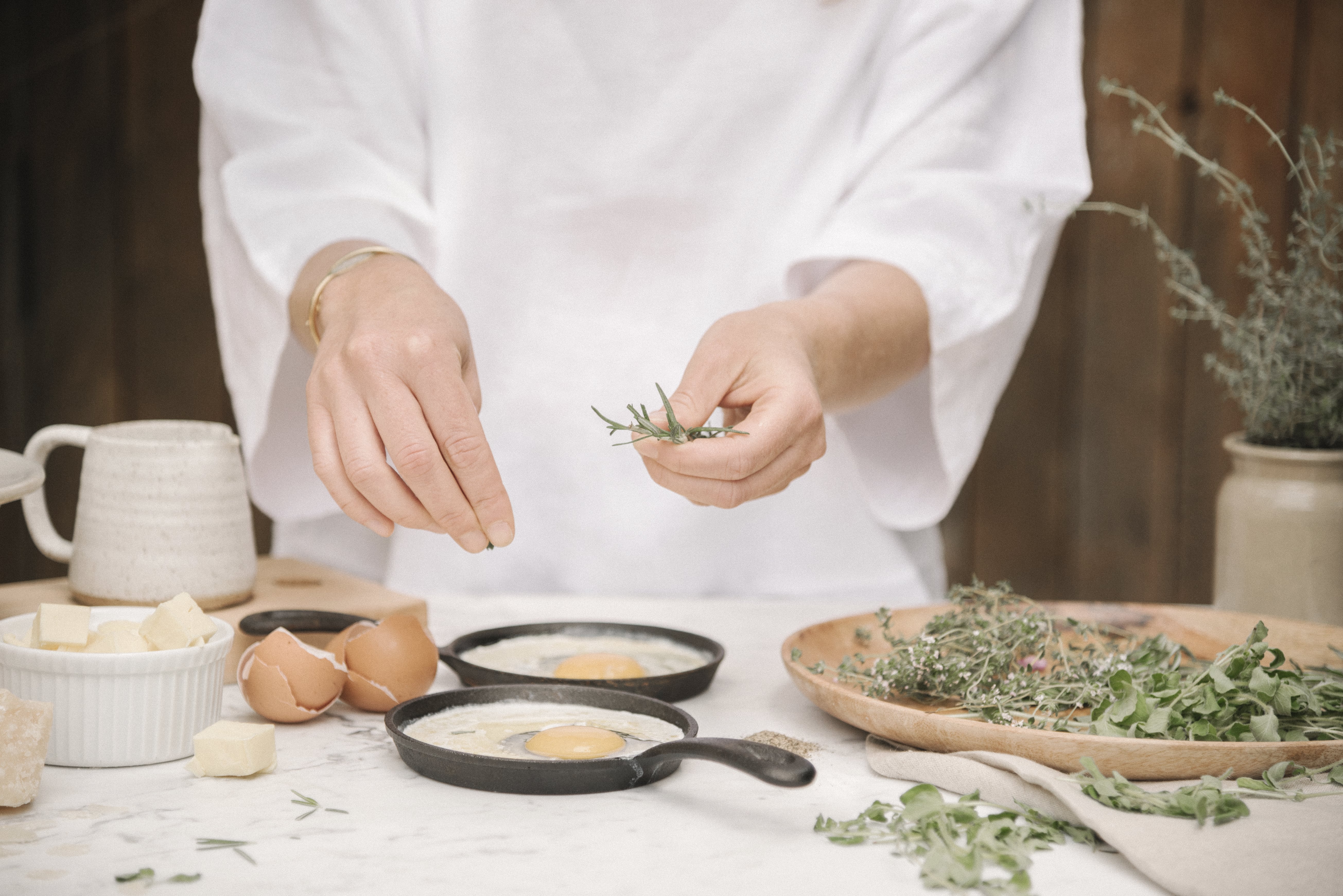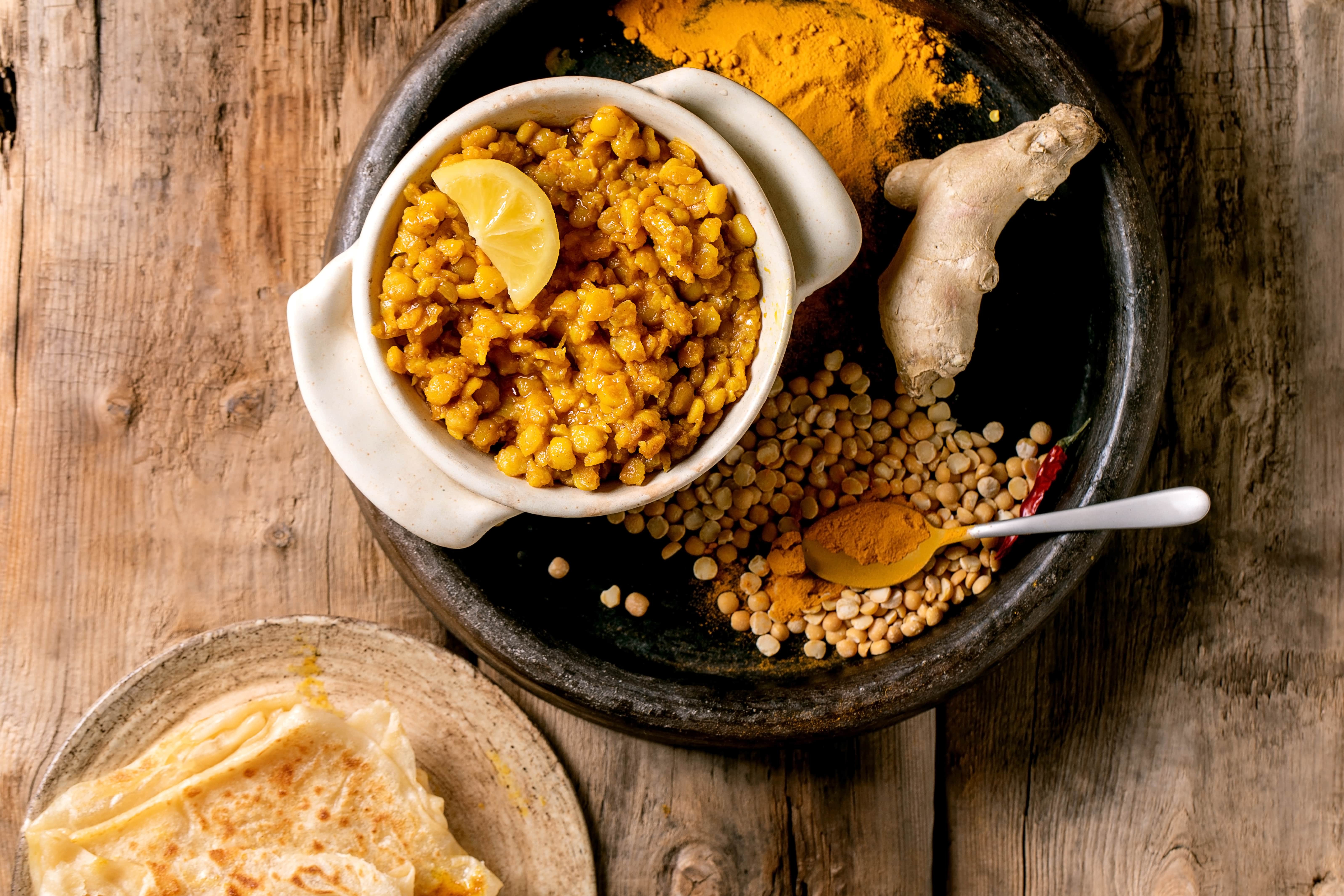Key Takeaways
- In addition to adding flavor, herbs and spices reduce post-meal glucose.
- Herbs for glycemic control include turmeric, fenugreek, and ginger.
- These herbs and spices can be added to a variety of recipes for steady blood glucose control.
{{mid-cta}}
Looking in your spice cabinet, you’ll likely find anything from black pepper to cumin to fenugreek. After all, there are a plethora of herbs and spices, and the opportunities for adding flavor to your food are endless.
But spices aren’t just for taste; they may also help lower blood sugar, improve insulin sensitivity, and support glucose metabolism. Many of these herbs have been studied for their anti-diabetic and antioxidant properties, showing promising health benefits for people with prediabetes or type 2 diabetes.
Why Herbs & Spices Matter for Glucose Control

Herbs and spices contain bioactive compounds that have antioxidant, anti-inflammatory, and anti-diabetic properties, thanks to polyphenols, which help improve blood sugar control through various mechanisms. Some of these mechanisms include decreasing glucose reabsorption from the digestive tract, stimulating insulin secretion from the pancreas, and acting as an insulin-like protein.1
Research using in vitro studies and clinical trials has shown that certain herbs can help regulate blood glucose levels, reduce oxidative stress, and improve cholesterol levels and lipid profiles, all of which contribute to better glycemic control and cardiovascular disease prevention.
Spotlight Spices That Lower Post-Meal Glucose

These standout ingredients don’t just boost flavor; they also bring real metabolic benefits, from improving insulin sensitivity to reducing post-meal glucose spikes. Spices like cinnamon, cloves, fenugreek, cumin, oregano, and turmeric have all been shown to support healthier blood sugar levels.2
Take cinnamon, for example. Research (including a systematic review and meta-analysis) has found that regular intake can significantly lower fasting blood sugar, insulin resistance, and cholesterol in people with type 2 diabetes and obesity.3
Fenugreek is another powerful herb studied for its anti-diabetic and hypoglycemic effects. Evidence shows it can meaningfully reduce fasting glucose, A1c, and post-meal blood sugar, making it a great addition to balanced meals.4
Then there’s ginger, known for its ability to lower fasting blood sugar and A1c, while also supporting healthy lipid and triglyceride levels.5
And finally, turmeric (rich in the active compound curcumin) offers strong anti-inflammatory and antioxidant benefits. Studies suggest it may help improve insulin sensitivity and lower blood sugar when used regularly over time.1
Together, these herbs and spices do more than enhance your food; they can help you cook with purpose, flavor, and metabolic balance in mind.
The Signos Way: Using Herbs with Insight

Signos helps you bring both flavor and function to your meals. By pairing real-time glucose data with your everyday cooking, you can see exactly how herbs and spices affect your unique metabolism.
With the Signos glucose insight loop, you can experiment with ingredients like ginger, turmeric, and cinnamon extract, then instantly see how they influence your blood glucose levels, glycemic response, and insulin sensitivity. These personalized insights help you identify which herbs best support your metabolic balance, and which ones may cause unwanted spikes.
Timing matters, too. Signos makes it easy to see how using anti-diabetic herbs such as clove tea or turmeric, whether in the morning, with meals, or before fasting, can impact your fasting glucose trends and post-meal stability.
Over time, the Signos app compiles this continuous data into metabolic patterns, giving you a broader view of how your blood pressure, insulin response, and glucose variability evolve with dietary changes. From meal logging to real-time alerts and trend tracking, Signos turns your kitchen into a lab for personalized metabolic discovery.
How to Cook with These Herbs: Quick Tips

With the versatility of spices that lower blood sugar, there are countless ways to add them to your daily meals.
- Cinnamon can be added to carbohydrates like oatmeal and desserts, though it also enhances savory dishes such as pot roast or roasted root vegetables.6
- Cloves, oregano, and cumin can elevate both sweet and savory recipes, contributing not only to flavor but also to improved glycemic control and reduced risk factors for heart disease.7
- Turmeric pairs well with black pepper, which enhances curcumin absorption and amplifies its health benefits. Try adding these spices to smoothies or golden milk for an easy metabolic boost.10
- Fenugreek is typically used in Asian and Middle Eastern recipes. Moroccan lentil stew, Makhani chicken, and green bean curry are just some of the dishes this herb blends well with.8
- Soy ginger salmon pasta bowls, gingered butternut squash soup, and tofu steaks with ginger vinaigrette are delicious ways to incorporate herbs for glycemic control into your meals.9
If you are new to cooking with herbs and spices, start by using recipes that specify the amounts needed. Dried herbs and whole spices should be added early in the cooking process so their flavors have time to blend with the food. In contrast, fresh herbs should be added when the dish is almost done cooking to preserve their flavor. Store herbs and spices in a cool, dark location to keep them fresh.
Sample Meal & Spice Pairing

Creating meals that keep your blood glucose steady doesn’t mean giving up flavor; it’s about finding the right balance. The Signos Plate Method helps you do just that, showing how to pair protein, healthy fats, and complex carbs for satisfying meals that support stable energy and improved insulin sensitivity.
For example, try turmeric-spiced pork tenderloin with roasted sweet potatoes and green beans. The lean protein and fiber-rich vegetables help slow glucose absorption, while turmeric adds both warmth and anti-inflammatory benefits. You can track this meal in Signos to see how your body responds in real time, spotting whether it keeps you in your optimal glucose zone or if a tweak (like adding more protein or fiber) could improve your results.
The app’s glucose insight loop makes experimenting easy. You can test how different spices (like cinnamon on your morning oats or cloves in an evening tea) affect your glucose curve. Over time, Signos learns your unique responses and helps you identify your best-performing ingredients and meal patterns for sustained energy and better metabolic health.
With Signos, every meal becomes an opportunity to discover how food and flavor work for your body, not against it.
The Bottom Line
Herbs and spices help reduce postprandial glucose levels, support glycemic control, and contribute to lower blood sugar levels over time. Cinnamon, turmeric, cloves, cumin, and fenugreek have all been shown to enhance insulin sensitivity, lower LDL cholesterol levels, and promote healthy lipid and fatty acid profiles.
With Signos’s personalized feedback, you can see a significant difference in your blood sugar levels, minimize hyperglycemia, and improve your overall well-being through smarter, data-driven cooking.
Learn More With Signos’ Expert Advice
Signos helps users understand their blood glucose levels in real time, offering insight into blood sugar spikes, insulin resistance, and metabolic syndrome.
With expert guidance from a dietitian and AI-driven feedback, users can optimize nutrition, manage risk factors for heart disease and cardiovascular disease, and enhance their overall diabetes care.
Topics discussed in this article:
References
- Tran, N., Pham, B., & Le, L. (2020, August 28). Bioactive compounds in anti-diabetic plants: From herbal medicine to modern drug discovery. Biology (Basel), 9(9), 252. doi:10.3390/biology9090252
- Pereira, A. S. P., Banegas-Luna, A. J., Peña-García, J., Pérez-Sánchez, H., & Apostolides, Z. (2019 November 7). Evaluation of the anti-diabetic activity of some common herbs and spices: Providing new insights into inverse virtual screening. Mol, 24(22), 4030. doi:10.3390/molecules24224030
- Deyno, S., Eneyew, K., Seyfe, S., Tuyiringire, N., Peter, E. L., Muluye, R. A., Tolo, C. U., & Ogwang, P. E. (2019, August 16). Efficacy and safety of cinnamon in type 2 diabetes mellitus and pre-diabetes patients: A meta-analysis and meta-regression. Diabetes Res Clin Pract, 156, 107815. doi:https://doi.org/10.1016/j.diabres.2019.107815
- Kim, J., Noh, W., Kim, A., Choi, Y., & Kim, Y. S. (2023). The Effect of Fenugreek in Type 2 Diabetes and Prediabetes: A Systematic Review and Meta-Analysis of Randomized Controlled Trials. International journal of molecular sciences, 24(18), 13999. doi: https://doi.org/10.3390/ijms241813999
- Paudel, K. R., Orient, J., & Penela, O.G. (2025, July 30). Pharmacological properties of ginger (Zingiber officinale): What do meta-analyses say? A systematic review. Front. Pharmacol, 16. doi: https://doi.org/10.3389/fphar.2025.1619655
- Luna, S. (2025, January 24). Easy but delicious ways to add cinnamon to your dishes. Mashed.com. https://www.mashed.com/1763575/easy-delicious-ways-to-add-cinnamon/
- Allrecipes.com. (n.d.). Cloves. https://www.allrecipes.com/recipes/1134/ingredients/herbs-and-spices/spices/cloves/
- Allrecipes.com. (n.d.). Fenugreek. https://www.allrecipes.com/recipes/1140/ingredients/herbs-and-spices/spices/fenugreek/
- McArdle, M. (2025, May 2). 46 ginger recipes that bringe heat, brightness and bold flavor to every meal. Foodandwine.com. https://www.foodandwine.com/ginger-recipes-6407216
- BBCgoodfood.com. (n.d.). Turmeric recipes. https://www.bbcgoodfood.com/recipes/collection/turmeric-recipes?page=3




.svg)






.webp)



.svg)
.svg)
.svg)
.svg)
.svg)
.svg)
.svg)
